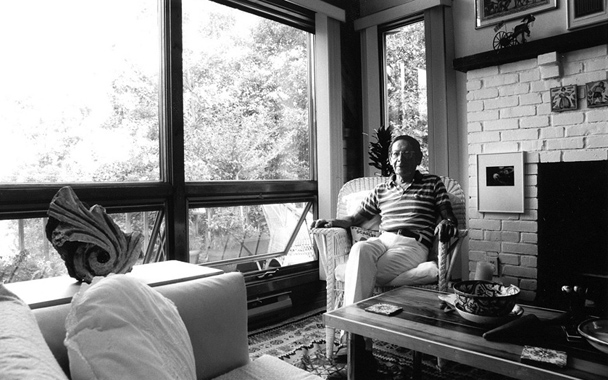Jay Jacobs, Gourmet’s restaurant reviewer from 1972 to 1986, died on October 2 at the age of 86. The son of a mother who, to use his own words, was “abysmal in the kitchen,” Jay had developed his interest in food as a survival tactic. “I thought I’d reached heaven when I tasted army food,” he once said.
Much of his writing after the war was concerned with movies, books, and art. “I was a journalistic hit man,” he explained in A Glutton for Punishment: Confessions of a Mercenary Eater (Atlantic Monthly Press, 1990). “My days were made by doing sadistic little numbers on blockbuster Hollywood extravaganzas of no discernible merit, on functionally illiterate authors, on hapless daubers …. I was the holy terror of benighted creativity.”
He did not pull his punches when he became a restaurant critic, either. In the early ’70s, Gourmet kept a determined distance from anything that could be interpreted as controversial, and the ground rules for restaurant reviews prohibited negative criticism. But that never stopped Jay from taking deserved swipes that were calculated but never catty. “If you patronize Italian restaurants in this country with any frequency,” he wrote, “you’re probably as bone-weary of such ubiquitous starters as stuffed clams, stuffed mussels, stuffed mushroom caps—stuffed anything—well, you know the standard options as well as I. There’s nothing inherently wrong with any of these dishes …. But most restaurateurs, though even wearier of the damned things than their patrons are, lack either the courage or the imagination to vary routines they have found to be profitable ….”
Under the pseudonym “Hudson Bridges,” Jay also wrote the catchall Along the Avenues column, in which he was free to explore anything in New York City and its boroughs that caught his interest, and here he gave free rein to his many passions, extraordinary erudition, wit, and delightful way with language. He also wrote the occasional article about his travels—the culinary pleasures of Normandy, tapas in Madrid, or three cathedrals in England (on which last trip he took the opportunity to marry his beloved second wife, Pamela McCormick). The first drafts of his articles were written on yellow legal pads in a tidy, slanted print-script with a black Bic pen, then perfectly typed on a jumpy typewriter on which the elderly “o”s were completely blacked in.
As a restaurant critic, he enjoyed a rich social life. He was a delightful dining companion; everyone wanted to have dinner with Jay. He was always generous about including impecunious young editors in his restaurant forays, and he was generous, too, about sharing his knowledge, helping to educate and refine countless palates. Impeccably dressed in pin-striped suits (though never, even on the coldest nights, an overcoat), Jay was the first to refer deprecatingly to his diminutive stature. He combined a kind of Robert Mitchum toughness with unfailingly gentlemanly manners, insisting, for example, if it was raining, on walking on the “outside” to protect his companion from the possible splash of a passing taxi.
His friends knew him as a peerless host and indefatigable cook. He threw legendary parties. Gourmet’s former executive food editor Zanne Stewart remembers an Easter brunch at his Easthampton cottage at which he served poached quails’ eggs on toasted brioche, topped with caviar. “Just a simple little breakfast,” he announced, unable to hide his obvious satisfaction at her delight.
A Glutton for Punishment chronicles Jay’s adventures and misadventures as a food critic as well as the politics in the corridors of Gourmet. We only wish we could see what the publisher’s lawyers blue-penciled out. Jay’s other books on or about food include A History of Gastronomy, New York à la Carte, Winning the Restaurant Game, and Cooking for All It’s Worth. He also co-wrote Lidia Bastianich’s first book, Cucina di Lidia. His non-food-related books include R.F.K.: His Life and Death, The Color Encyclopedia of World Art, and The Horizon Book of Cathedrals.
Jay was rarely seen without his cigarette of choice, a Benson and Hedges. He had a weakness for attractive women in general, Gordon’s gin in particular, and puns and doggerel of all kinds. Zanne recalls, “We were walking along Ninth Avenue after a meal somewhere, and we passed a carriage horse, nose deep in its feedbag. Jay said, ‘Now that’s what I call haute cuisine.’” His interests were wide and catholic. Aside from having an encyclopedic knowledge of food, he could recite Shakespeare’s sonnets by the yard; he was passionate about sports, especially baseball (specifically the Mets) and a great fan of Rusty Staub and his eponymous restaurant; and he worked for years on an epic and ribald poem about the sex life of tortoises. Jay’s beautifully crafted and informed articles shine like a beacon from another age. He will be missed by all who had the good fortune to know him … and to share a table with him.

